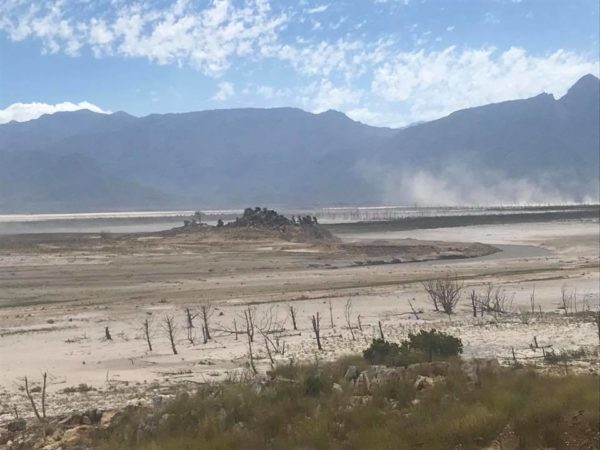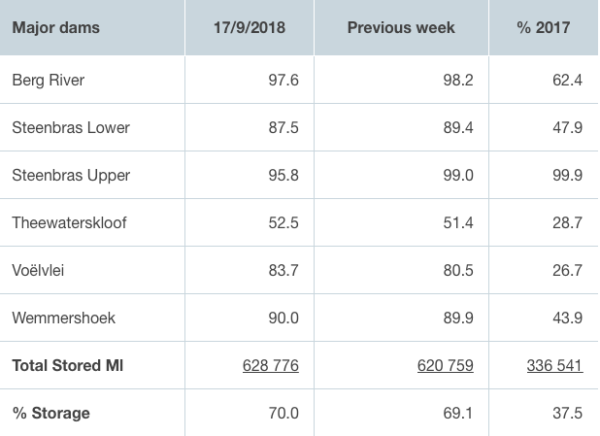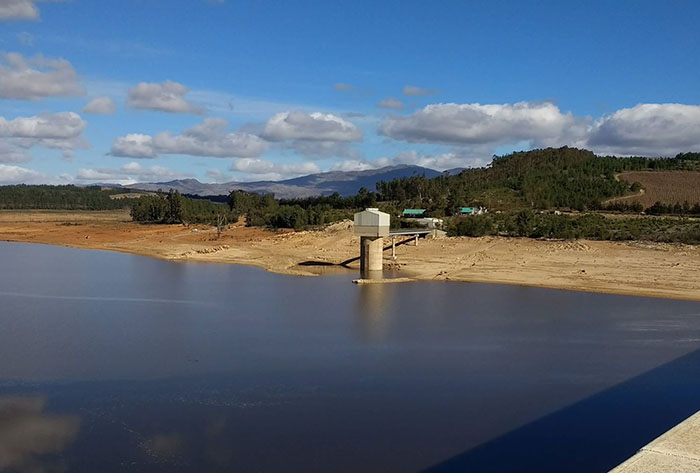Cape Town’s dams have finally reached a capacity of 70% full. This is a 0.9% increase from last week’s reading of 69.1%. A year ago, the dam levels were at an average of 37.5%, almost half what it is today.
In May 2017, dams levels dropped to an all-time low of 21%, with the final 10% considered unusable – we had only 11% water left to consume. Cape Town came considerably close to being the first city in the world to run out of drinkable water.

Capetonians can breathe a huge sigh of relief that we have water in our dams and they continue to rise. More rain has also been predicted for this week, and we’re hopeful that levels will continue to rise.
The current Level 6B water restrictions will be relaxed on 1 October – the City has been granted permission by the National Department of Water and Sanitation (DWS) for the marginal lowering of water restrictions. This means that Capetonians will now be able to use 70 litres of water per day instead of 50 litres.
This also means that the water tariffs will be lowered between 26.6% – 70% per kilolitre of water. This, however, is very dependent on the household’s usage and tariff category.

Picture: Twitter






